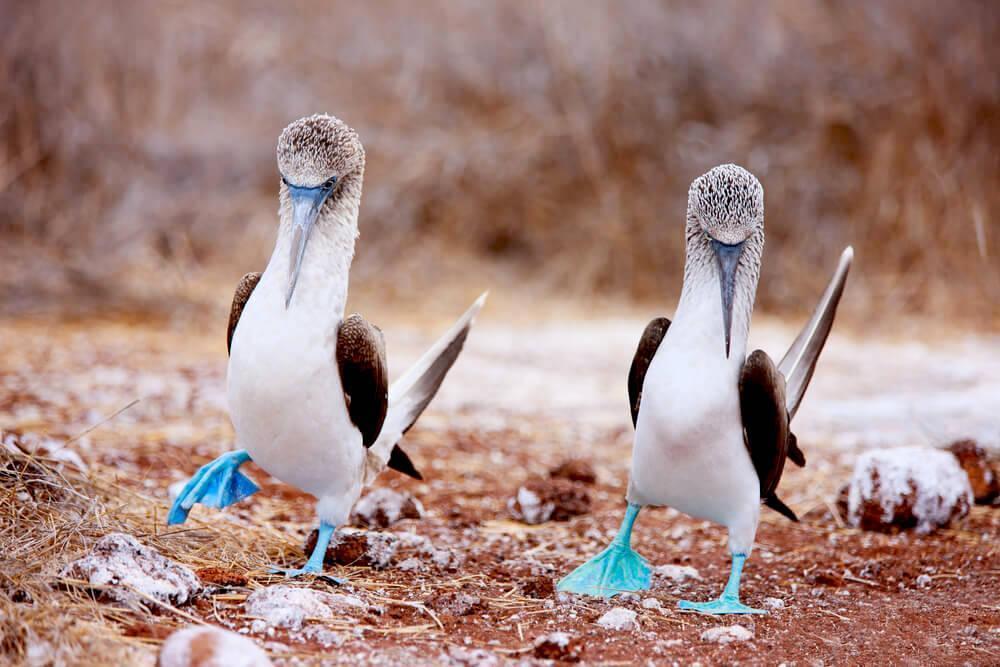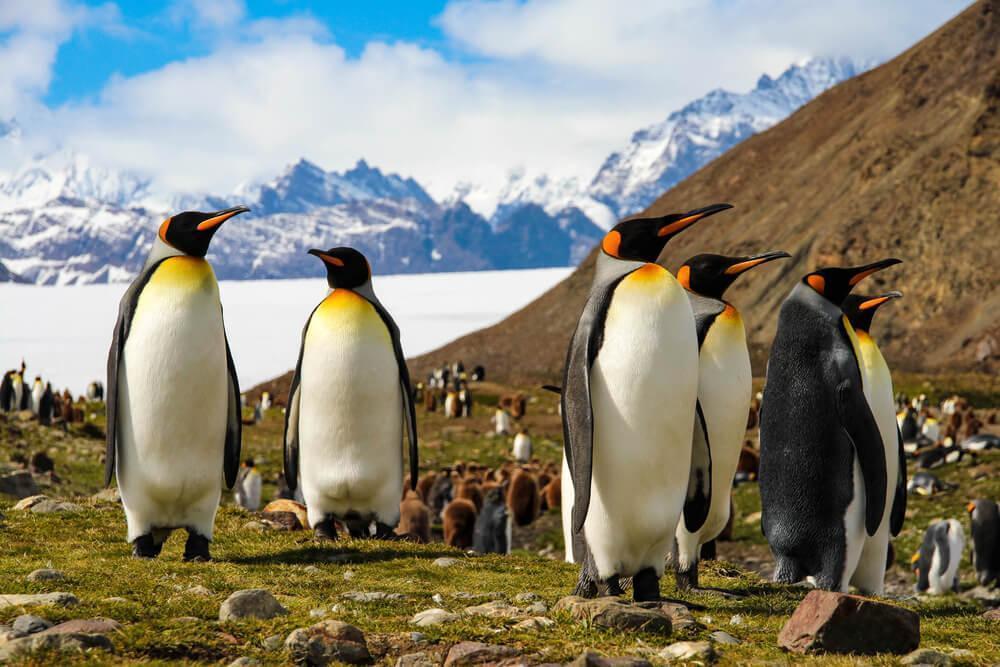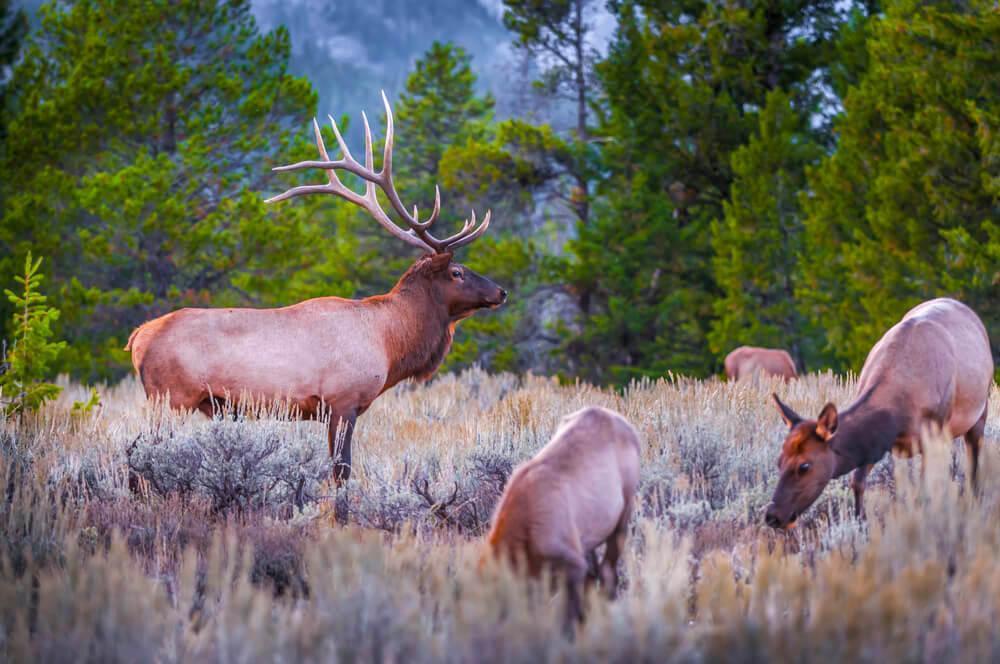What’s your idea of wildlife? Going to a poolside nightclub on spring break? Leopard print shoes? Drinking a little too much while watching National Geographic? Sure, we all talk about abandoning out cell phones for a weekend, but do you think you could actually do it? How about leaving the stilettos in the closet, putting on the hiking boots and get unclose and personal with some wild animals?
We all ooh and aah when we see the baby leopards and koalas on talk shows, but when they’re not sedated and on their own turf, there may just be a little fear added to all that cooing. So why should you put yourself in mortal danger, out of reach of cellular connection, and your favorite Louis Vuittons? Because sometimes it takes experience to fully understand the unknown, and once you do, you’ll never look at life the same way.
Are you in? If so, here are some of the best places to bring out the wild side of you.
Costa Rica
Think you’re up on your list of living organisms? Costa Rica is a great place to test your knowledge. Home to more than 500,000 species, Costa Rica is one of the top twenty most bio-diverse countries in the world, and considering the country is about the size of West Virginia, its a pretty safe bet that Costa Rican animals probably do not get too much privacy.
With a variety of habitats, ranging from deciduous forest, coastline (both Pacific and Atlantic), tropical rainforest, mangrove forest, and cloud forest, Costa Rica is home to mammals, reptiles, amphibians, birds and insects, and good luck if you manage to see about half of them on your trip.
Keep your eyes open for the well-camouflaged sloth, attune your ears for the bay of the Mantled Howler Monkey, and try and spot the colorful feathers of the Resplendent Quetzal.
Yellowstone National Park
With American consumerism and tourism on the rise, you’re not likely to find many animals that are not on leashes in America, but if you want to keep your wildlife within reach of cellular reception, Yellowstone National Park has the biggest amount of wildlife in the lower 48 states.
However, if there are specific types of animals you’re seeking, you may want to know where to look for them. If it’s the resident elk herd you seek, you’re most likely to find it in the Mammoth area munching on the grass around the hotel and visitor center. If a grizzly bear is a must-see, try cruising the valley of the Park at sunset for your best chance of an encounter. The free-ranging bison have been in the Haydn Valley since prehistoric times, and are not likely to relocate any time soon. If you’re up at sunrise, you may be able to spot a wolf in Lamar Valley.
Galapagos Islands
If you have visions of Richard Chamberlain, covered in fur, mustache frozen to his face, venturing across the frozen tundra, you’re probably imagining a slightly romanticized version of the Galapagos Islands.
Located 600 miles off the coast of western Ecuador, the Galapagos Islands are a chain of islands which have never been attached to the mainland, which means, that for a species to have arrived there, they could only have done so by swimming, floating, of flying.
Therefore, larger mammals are found at the top of the food chain, and are not able to journey to the island, which means animals in the Galapagos do not encounter too many predators, and as a result, do not fear humans. The upshot? Unity among animals and humans. The Galapagos may be the only place where you can snorkel aside the Marine Iguana, walk among the centenarian Galapagos Giant Tortoises, and spot a staggering assortment of birds.

Those with an ornithological interest may be especially dazzled by the Blue-footed Boobies, Frigatebirds, Albatrosses, Flightless Cormorants, and the ever delightful Galapagos Penguin.
Namibia
Namibia gets cred as the first African country to incorporate environmental protection into its constitution, and if that isn’t reason enough to take a visit to the country, perhaps the results of it are. As a result of granting rights to the animals, the animals have 26 parks and reserves set aside, making it one of the greatest tourist wildlife attractions.
However, the Nambian government is not only aimed at the short term protection of animals, it’s in it for the long haul. Communal conservancies have been organized throughout the country to help battle the destruction of wildlife through ecotourism, education, and protect of migration routes, and habitats. Thanks to these non-profit organizations, populations of black rhinos, lions, and cheetahs, have been able to take back their land.
Amazon River Basin
If the only Amazon you know is the one that you buy your kitchen appliances from, you really need to get out more. Out to the Amazon River Basin, that is.
Over one-third of all species in the world are thought to make their homes in the Amazon Rainforest, making it home to more species than any other terrestrial system on Earth. Reptiles, primates, amphibians, tapirs, jaguars and even capybaras (the biggest rodent in the world) reside in this River Basin, and there’s little doubt you’ll find them on your trip.
If birds are your passion, the Amazon is a birder’s paradise, Like butterflies, the Amazon Rainforest contains over 4,000 species. Like amphibians? Log off the Amazon on your computer, and get in touch with the dolphins and manatee and get real, at the Amazon River Basin.
Antartica
Don’t expect to come back with an all-over body tan if Antarctica is your vacation destination. Holding the title of the driest, coldest, windiest continent, Antartica is no place to model your new bikini. Even though it may seem surprising that any animals can survive in such a chilly climate, Antartica is a feast of plenty for the whales, seals, penguins, and a wide diversity of seabirds who come to the frosty destination seeking the endless supply of crustacean, fish, and krill.
Of course, you can’t leave Antartica without a penguin selfie, and the birds are all decked out in their camera-ready tuxes, however while seventeen types of penguin can be found on the continent, only four types actually breed there.

Seals love the continent because their predators hate it, and polar bears love the dining selection. The baleen and toothed whale travel form great distances from their northern breeding grounds to feed on the nutrient dense waters of Antartica.
Alaska
If the only resident of Alaska you can name is Sarah Palin, you have a bit of exploring to do. Otherwise known as the Great Land, Alaska is home to sea and land species wildlife. It has the largest state park system in America, with 65% of it managed by the Federal government, making it a safe haven for wildlife ranging from beluga whales to bald eagles to everything in between.
Plus, if the only moose tracks you’re familiar with is an ice cream flavor, you can find the sweet treat’s namesake rife in the Alaskan snow. Even in Anchorage, you’re likely to see one of the thousand moose that make their homes there hanging out among the 300,000 human residence and no beef (literally and figuratively) between them. Off the coast, keep your eye out for whales, both Humpback and Killer, sea otters, sea lions, bald eagles, seals, and birds like kittiwakes, puffins, and oystercatchers.
Kenya
You’ve probably gone to school with a few of them, but have you ever met the real Kenya? This is not Kenya R., or Kenya P; this is Kenya, Africa, home of the “Big Five.” Think you can guess them? Spoiler alert! The “Big Five” include the lion, the king of the jungle; the elephant, the world’s largest land mammal; the rhinoceros, black and white (save the chubby unicorns) both endangered species; and the enigmatic leopard, hunting and night, and spending the days reclining in tree branches.
Other animals not as “big,” but equally as intriguing include giraffes, zebras, wildebeest, oryx, hyenas, jackals, baboons, monkeys, hippos, gazelles, and antelopes, to name just a few. Visit the Masai Mara Game Reserve in July through October to witness the stunning migration of millions of wildebeest, and zebra.
South Dakota
It may not be the home where the buffalo roam, but you’ll probably find a lot of animals from the same family in South Dakota.
Custer State Park, the first and largest wildlife park in the state, provides territory for animals with a wide range of dispositions, from the “don’t mess with me” bison to the “please don’t mess with me” prairie dog. Somewhere in between the two, is the begging burro. Not Black Hills natives, these donkeys are descendants of the infamous herds of burros that once hauled eager visitors to the top of Harney Peak. However, once the rides stopped, the burros were released into Custer State Park, where they make their homes to this day among the pronghorn (a.k.a. antelope), elk, horn sheep, mountain goat, and wild turkeys.
Grand Teton National Park
Supermodels have often been compared to elk, so you might not be too amiss if you think of Grand Teton National Park as something of a wildlife fashion show. The Grand Teton National Park is the home of a variety of animal populations, with some more likely to be seen, depending on what time of year it is.

If it’s the ever-graceful elk you seek, the largest herd in North America migrates between the Grand Teton National Park in the summer, and the National Elk Refuge, southeast of the Teton in the Winter. You’ll hear the whistle of the Yellow-Bellied Marmot in July, but you’ll find it hibernating in the winter, while you’ll find moose snacking on willow along the Gros Ventre river drainages in summer, but are more likely to be conserving their energies or feeding on sprouts in the wintertime.
National Geographic Expeditions
Of course, you may not want to abandon all the accouterments of modern life, and if that’s the case, you may want to look into a somewhat more secure option to touring the wilderness. National Geographic Expeditions are a happy medium.
Designed to provide a complete customer-friendly experience, the expeditions provide travel aboard small ships, by land, along classic train routes, and even in the comfort of private jets, with special rates for families, students, and photographers. Other perks include input and trivia from knowledgeable experts, and of course, the safety of numbers.
If the National Geographic route is more your speed, there are an array of packages to choose from:
Africa: On this tour, you can follow in the footsteps of the National Geographic experts on safari in southern Africa; see the endangered gorillas on the mountains of Rwanda, or meet with Masai villagers in Tanzania.
Asia: Tour the floating villages along the Mekong River in Asia, be dazzled by the palaces of India, stroll along the Great Wall, or ride horseback against the Mongolian steppe.
Australia and the Pacific: Encounter and abundance of wildlife where glaciers meet rainforests, and coral reefs sparkle. Tour the Great Barrier Reef, and get a feel for the indigenous cultures of Australia.
Central America and the Caribbean: Tour the lands of Central America where jungles, wetlands and cloud forests teem with wildlife and the legacy of Maya. Experience the lively Caribbeans culture, kayak amid Belize’s barrier reef, and venture deep into the Costa Rican rain forests with the National Geographic team.
Europe: Ok, so if you visit Europe looking for wildlife, it may be forgivable to venture into Paris or Milan for some shopping, but if you stick with the NG crew, you can ask sail across some pretty cool waterways, hike through olive groves and Alpine Meadows, and sail around ancient islands, but beware, some of those islands just might be haunted, so be sure to bring your iPhones, you never know what you might capture, if you don’t get captured first!
Go alone, go with friends, go with a tour group, but go. Explore the wildlife, stay safe, and have fun, and if you know of any wildlife destinations that we missed, or want to tell us about your wild times in the wilderness, we love to hear from you!





Leave A Comment